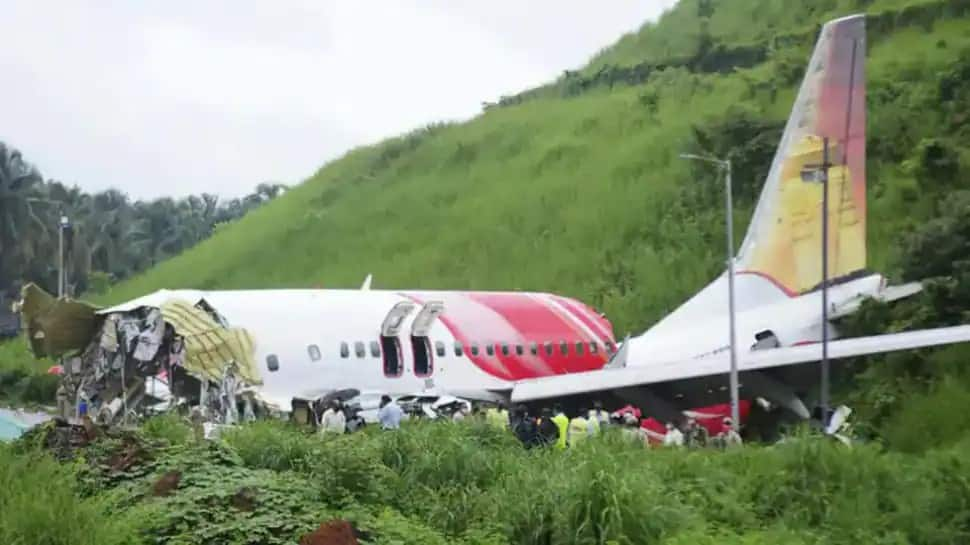Plane crash mishaps can happen with any pilot, but what could be the possible reasons behind them? Is it the emergency landing? Or weather conditions? Reports say probable visual illusions, faulty windshield wipers can too, lead to a plane crash.
An ill-fated Air India Express plane crashed at the Kozhikode airport last year due to low visibility and sub-optimal performance of windshield wipers. As per reports, rain made the vision worse for the pilot which led to the disastrous plane crash.
Besides, a steep authority gradient prevented the pilot monitoring to make assertive call-outs and take actions as per the Standard Operating Procedure (SOP), which became a major contributory factor for the accident.
Read also: Republic Day 2022: Grandest ever Indian Air Force flypast with 75 planes witnessed
The Aircraft Accident Investigation Bureau (AAIB) report delved into the accident on August 7, 2021, when the Boeing 737-800 aircraft overshot the tabletop runway and fell to a depth of about 110 feet below the runway elevation, and broke into three pieces.
As per the report, two pilots, 19 passengers, and three infants lost their lives as the plane coming from Dubai with a total of 190 people on board, crashed. Non-adherence of the pilot to the SOP as well as systemic failures have been cited in the report as the probable causes for the crash at the Kozhikode airport in Kerala.
"Due to degraded visual cues of orientation caused by low visibility and sub-optimal performance of the PIC's (Pilot In Command) windshield wiper in rain, the PIC probably experienced visual illusions causing errors in distance and depth perception," the report said.
According to AAIB, the events of the AXB 1344 crash replicated the Mangalore crash of 2010. "Ten years later, on 7 August 2020, it was once again a similar tabletop aerodrome, the same airline, the same type of aircraft that landed off an 'Un-stabilised Approach' and touched down past half the runway and resulted in another major disaster".
The report noted that in the Kozhikode accident, the windshield wiper on the captain's side stopped working after operating for about 27 seconds during the first approach to land and in the second approach it worked, albeit at a speed slower than the one selected.
"The SOP clearly states that after a second missed approach due to weather, the aircraft must divert to an alternate airfield. This factor was important since this aircraft had already carried out one missed approach and considering the prevailing weather and visibility conditions, there was a high likelihood of another missed approach.
"With an unserviceable wiper, even the choice for alternate airfields in case of a second missed approach was restricted to only those airfields where it was not raining," the report said.
Noting that in the last ten years, Air India Express Ltd (AIXL) had two major accidents and several non-fatal accident/serious incidents, AAIB said most of them were a result of the continuation of unstabilized approach and total disregard to the repeated calls from the First Officer to 'Go Around', both being a serious breach of SOP.
"This resulted in long landings in which the aircraft was unable to stop on the runway and terminated in the excursion. There was reluctance on the part of the First Officers to take over controls and execute a missed approach, which is the correct procedure, as given in the SOP and is expected to be done without any hesitancy.
"A steep authority gradient discouraged and prevented the participation of the First Officers. Hence, they were extremely reluctant to exercise their duties and responsibilities in emergency/ critical situations," it said.
Further, the report pointed out that it was evident that there is a serious safety concern of steep authority gradient in the company which prevented the PM (Pilot Monitoring) to make assertive call outs and take actions as stipulated in SOP and that it was again is one of the major contributory factors to the accident.
Among other aspects, the probe report has flagged that AIXL did not have provision for a child/infant restraint system and they rely solely on lap-held infants without any supplemental restraint. Out of the 10 infants on board the plane, three sustained fatal injuries, three had serious injuries and four escaped unhurt.
"The laboratory studies have confirmed that an adult may not be able to hold on to an infant on the lap in sudden decelerations, even when prepared. The infant may then be projected through the cabin and suffer serious injury as a result.
"Therefore, the studies have concluded that lap holding of infants without supplemental restraint is not deemed the safest method during air travel," it added.
With inputs from PTI
#mute
















